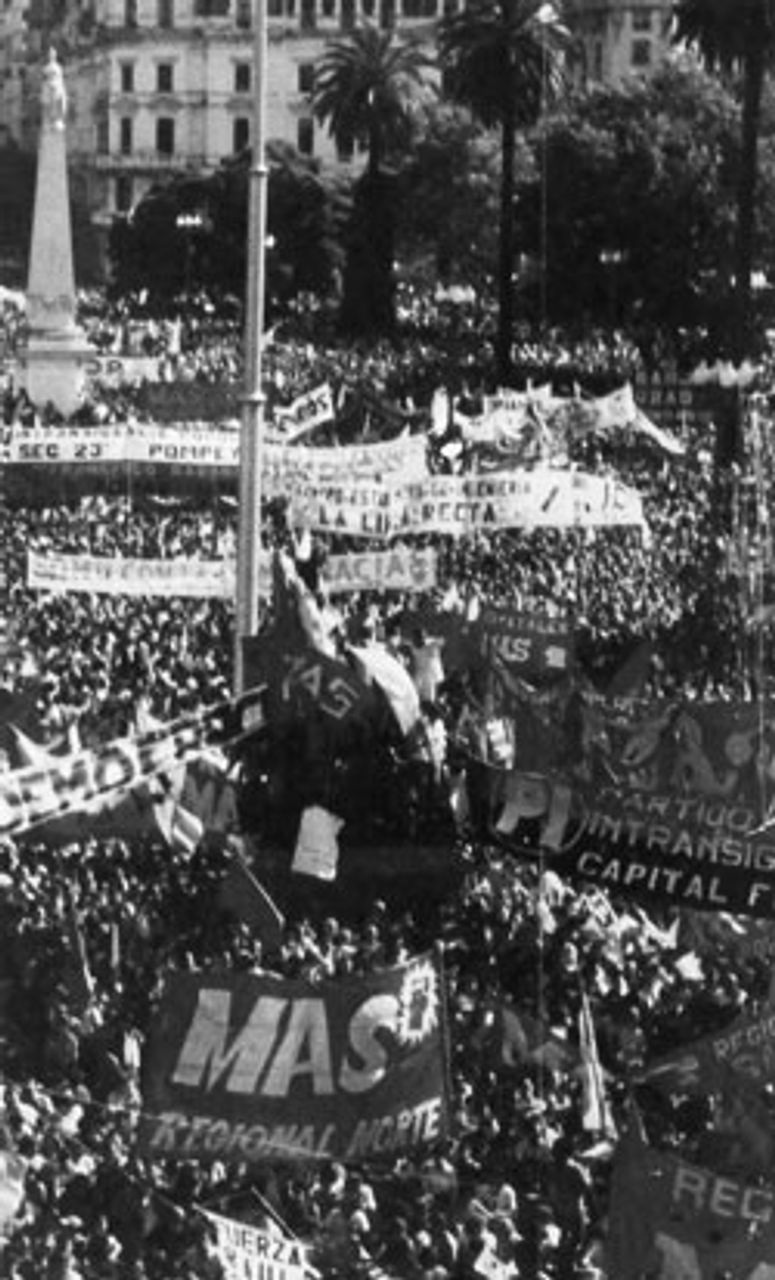WORLD SOCIALIST WEB SITE
 Demonstration against the military in Buenos Aires, April 1987
Demonstration against the military in Buenos Aires, April 1987
On Sunday, April 12, 1987, the so-called “Easter rebellion” revolt of the Argentine military ended after five days without toppling civilian rule. The coup attempt was led by the torturers and murderers of the nation’s 18-year “dirty war,” during which as many as 30,000 workers and students were “disappeared.”
The military rebellion began April 8 when Maj. Ernesto Barreiro, an Air Force officer who served as the chief torturer at the La Perla concentration camp under the military dictatorship, refused to observe a subpoena from the civilian courts to answer to charges of torture and murder. When Barreiro took refuge in a paratrooper base in the central city of Cordoba, he was joined by 130 officers and soldiers, who then demanded amnesty for crimes committed during the dirty war. Other military bases were seized, including the infantry school at Campo de Mayo, where fortifications were set in place with tanks and machine guns.
President Raul Alfonsin, who headed the first civilian government after military rule ended in 1983, intervened to defuse the situation on terms favorable to the military through an “act of democratic compromise” signed by all major parties. Alfonsin was less concerned with the Army than he was with the working class, which had met the attempted coup with a massive response.
Immediately after the attempted coup, thousands of workers took to the streets, driving Barreiro out of Cordoba. On April 12, hundreds of thousands demonstrated in Buenos Aires against the military. When Alfonsin, addressing the crowd, characterized the fascist officers as the “heroes of the Malvinas war” he was met with jeers and catcalls.
WSWS for more
